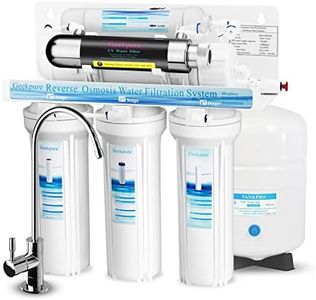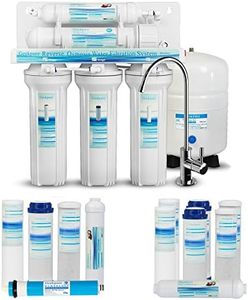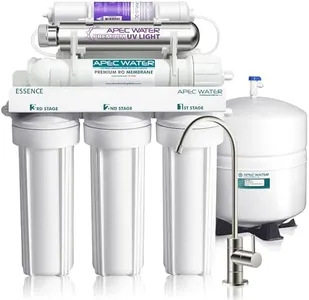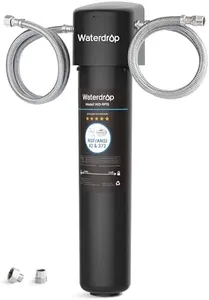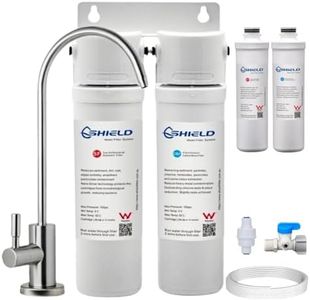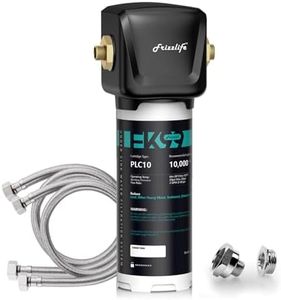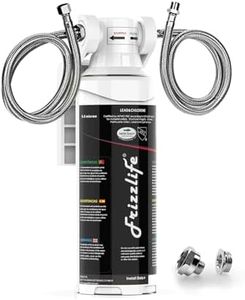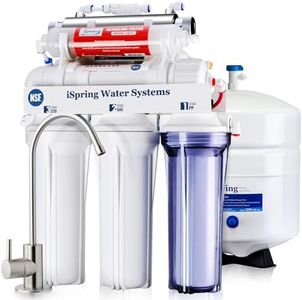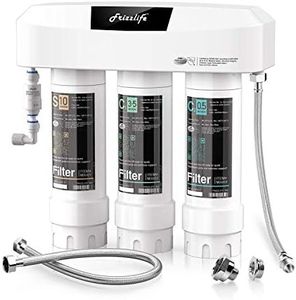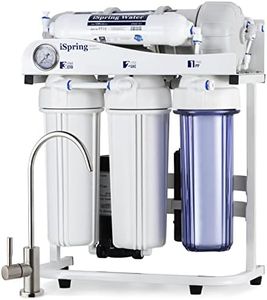We Use CookiesWe use cookies to enhance the security, performance,
functionality and for analytical and promotional activities. By continuing to browse this site you
are agreeing to our privacy policy
10 Best Under Sink Water Filter Systems
From leading brands and best sellers available on the web.Buying Guide for the Best Under Sink Water Filter Systems
Choosing the right under-sink water filter system can significantly improve the quality and taste of your tap water, making it safer and more pleasant for daily use. These systems are installed directly under your kitchen sink and filter the water before it comes out of your faucet. The best approach when shopping for one is to first understand your household’s water quality concerns, such as taste, odor, chlorine, lead, or other contaminants, and then match your preference to a filter that targets those specific issues.Filtration MethodThe filtration method refers to the technology the system uses to clean water. The most common are activated carbon, reverse osmosis, and multi-stage filtration. Activated carbon primarily removes chlorine, bad taste, and odor, while reverse osmosis can filter out a wider range of contaminants, including heavy metals and microorganisms. Multi-stage filters combine different methods for broader protection. To pick the right one, consider what contaminants are present in your water by checking your water report or using a home test kit. If your main worry is taste and chlorine, a carbon filter may be enough. For those with concerns about lead, bacteria, or other serious contaminants, consider reverse osmosis or multi-stage systems.
Filtration CapacityFiltration capacity tells you how much water the filter can clean before it needs changing, usually measured in gallons or months. Some filters may need replacement after a few hundred gallons, while others last much longer. If your household uses a lot of water for cooking and drinking, opt for a higher-capacity filter to reduce the frequency and cost of replacements. For single-person households or lighter usage, a lower-capacity system might suffice and still provide great value.
Flow RateFlow rate measures how quickly filtered water comes out of your faucet, usually in gallons per minute (GPM). A higher flow rate means you won’t have to wait long to fill a glass or pot, but some higher filtration levels (like reverse osmosis) might lower the flow. Consider how much filtered water you use at once. For larger families or frequent cooking, a higher flow rate is helpful to avoid waiting. Smaller households may be fine with a lower flow rate, especially if maximum filtration is a priority.
Filter Replacement IndicatorMany modern under-sink filter systems include a filter replacement indicator, either digital or mechanical, that alerts you when it’s time to change the filter. This feature is important because using an old filter can mean your water isn’t being cleaned properly. If you’re likely to forget or just want convenience, choose a system with a clear indicator. If you’re disciplined about tracking changes based on time or gallons used, a manual model might also work.
NSF/ANSI CertificationNSF or ANSI certification shows that the filter has been independently tested to prove it removes certain contaminants. Filters are usually certified to remove specific things like chlorine, lead, or cysts. Check what the filter is certified for based on your own water issues. Certifications are a good guide for reliability—if you want peace of mind, always check for these before buying.
Installation and MaintenanceSome under-sink water filters are designed for easy installation, often described as ‘DIY’ or tool-free, while others may require more complex plumbing work. Maintenance needs can also vary—some have simple cartridge swaps, others require more steps. Think about your handyman skills and willingness to perform routine tasks. If you don’t want to deal with plumbing or plan to move soon, search for easy-install and low-effort maintenance systems.
